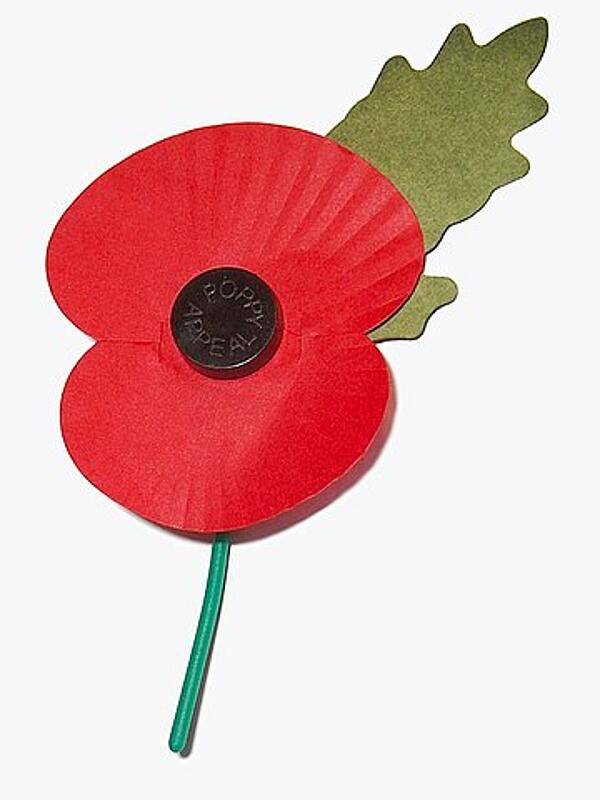Royal British Legion
The Royal British Legion was founded in 1921 with the aim of supporting the survivors of World War One, as well as their families, if they were struggling to look after themselves once the war was over.
The first British Legion Poppy Day was held on 11th November 1921 and the sales of poppies in the lead up to Armistice Day has continued every year since to raise money for the Royal British Legion’s work.

The first poppies were made by an American called Moina Michael who - inspired by John McCrae’s poem “In Flanders’ Field” - made them from red silk as she wanted to try to raise money for former US servicemen who could no longer care for themselves. In 1920, the pipe was adopted as America’s national emblem of remembrance. Madame Guerin, who was a Frenchwoman working in America to raise money to help the disabled war veterans of France, managed to persuade Earl Haig to adopt the poppy as the emblem for the British Legion.
In the UK, poppies were soon being made at the Poppy Factory in Richmond, who was opened by Major George Howson, MC, in 1922 and still makes poppies for the British Legion today. Howson was responsible for forming the Disabled Society to help former servicemen from World War One and had suggested that to the Royal British Legion that these disabled former soldiers could actually make poppies to be sold to the public. The principle of making sure that the poppies were simple in design so they could be assembled by anyone remains important even today.
Before the poppy factory was based in Richmond it was actually located just off Old Kent Road in London and employed just five people with a £2,000 grant from the Unity Relief Fund. However, within months of opening the workforce had grown to 50 and in 1925 the factory was moved to a former brewery in Richmond. A brand new factory was then opened in Richmond in 1933, along with flats to house the work force.
A similar factory was actually built in 1926 in Scotland by Earl Haig’s wife. The Lady Haig Poppy Factory continues to make poppies to this day, although they have four petal lobes instead of the two made in the factory in Richmond.
Although Howson had initially assumed his venture would be unsuccessful - saying to his parents “I do not think it can be a great success, but it is worth trying. I consider the attempt ought to be made if only to give the disabled their chance” - the poppies went on to be a huge success. Sadly, the work involved in running the factory was exhausting and Howson died in 1933 aged just 50. In recognition of the work he started, the Poppy Factory still sends a poppy wreath to his surviving family on the anniversary of his death.
MLA Citation/Reference
"Royal British Legion". HistoryLearning.com. 2025. Web.
